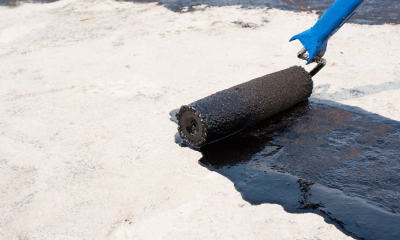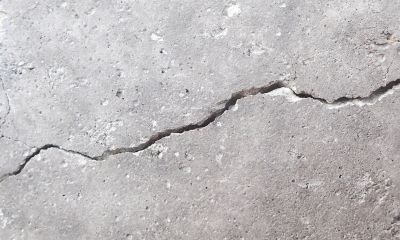A comprehensive guide to sewer pipe rehabilitation in the concrete strengthening and repair industry
Though sewer pipes are built to last – oftentimes, the pipes and lines require repair, strengthening, or complete restoration to ensure they hold and carry large volumes of liquid as they should. This is especially important when those pipelines are carrying drinking water, gas, oil, and other essential resources. This may include repairing existing sewer pipes, or replacing the system entirely – which in our industry is called sewer pipe rehabilitation. In this comprehensive blog, we explain the uses of pipeline rehabilitation, how to spot whether your pipelines need it, and more.
What is sewer pipe rehabilitation?
Sewer pipe rehabilitation, or sewer rehabilitation – uses non-invasive methods to repair, replace, or upgrade existing sewer pipelines – largely via relining, curing, and sealing techniques. The non-invasive methods that the majority of specialist contractors use involve `trenchless technology`. Trenchless technology, also known as trenchless pipe rehabilitation, essentially means that there is no requirement to dig the surrounding earth, use open excavation, or create a disturbance to the environment surrounding the sewer pipelines.
Trenchless procedures are quick and straightforward, with the vast majority of the work being completed to the affected pipe or pipe parts only. They are unlike conventional `open-cut` types of pipeline rehabilitation, which, traditionally, had to be invasive and caused a significant amount of damage to the area around the pipe. What’s more, the work was costly and caused delays in traffic, road closures, and had an adverse environmental impact. Luckily, pipeline rehabilitation techniques have changed considerably over the years, and conventional methods are no longer routine practise.
Is sewer pipe rehabilitation a type of pipeline rehabilitation?
The answer is – yes! Sewers or sanitary stations are just one area treated using the aforementioned non-invasive methods. Pipeline rehabilitation is suitable for any pipelines that run under cities or towns, buildings, or industrial facilities. Pipelines that can be treated by pipe rehabilitation include:
- Gas
- Oil
- Nuclear
- Petrol
- Slurry (such as coal, iron, or mining waste)
- Water supply
- Wastewater
Pipeline rehabilitation can also be used to restore storage tanks.
What causes damaged pipes or pipelines?
Before we move on to what the varying symptoms of damaged pipelines are and how to spot them – we will detail the common causes of those damaged pipelines. The cause(s) of a damaged pipeline can depend on how old the structure is, the environment in which it has been placed, the elements it is exposed to (natural causes), or even how the pipeline has been fitted. Here is a non-exhaustive list of the causes of damaged pipelines:
- Corrosion – which may be caused by oxygen penetrating water supply lines, incorrect pH levels, or high or excessive water pressure
- Clogged or blocked pipelines
- Ageing pipelines, or pipelines with old parts
- Wear & tear
- Heavy rainfall (which may affect sewer pipelines)
- High water temperatures (which may affect water pipelines)
- Freezing or below freezing water temperatures (which may affect water pipelines)
- Faulty pipe joints
- Incorrect pipe laying
- Improper installation of pipelines; this can have a domino effect on, for example, how water flows uphill.
Kindly call 01482 425250 to book your FREE feasibility study and cost analysis, or fill in our online form to request further information.
Common signs & symptoms of damaged pipelines
Many signs and symptoms indicate damaged pipelines or the need for pipeline rehabilitation. These signs may include one or more of the following:
- Pipes appear with foundational cracks, voids, or sinkholes
- Pipes are blocked or slow-draining
- The appearance of waterlogging or pooling
- Pipe fixtures are stained
- A strong or foul odour coming from pipes – this is caused by the pipe’s contents being exposed or leaking out, such as sewage of a sewage line
- Evidence of an insect infestation – such as silverfish or roaches
- Evidence of a rodent infestation – rats can squeeze through tiny cracks or gaps in pipes, which obviously signals a cracked pipe
- The appearance of mould
How is sewer pipe rehabilitation done? Common sewer pipe rehabilitation methods
As aforementioned, the methods we use fall under trenchless pipe rehabilitation, meaning that little disruption is caused to the environment around the pipelines, and the work solely impacts the pipes themselves. The pipes we work on are made from reinforced concrete or steel and ductile iron and can be successfully rehabilitated after using the following methods:
- Epoxy Coatings and Wraps such as our Tyfo Fibrwrap solutions which are ideal for leak remediation and leak prevention
- Gunite or shotcrete (wet or dry sprayed concrete) which is perfect for the strengthening and reinforcing of pipes, such as increased bending strength, compression strength, and hoop stress
- Fold and Formed Pipe (also known as Sliplining)
- Mechanical Spot Repair
For further information on the methods we use for sewer rehabilitation, please visit our dedicated page on pipeline rehabilitation and liquid storage solutions.
There are additional forms of pipe rehabilitation called Cured-in-Place-Pipe (CIPP) and Grout-in-Place-Pipe (GIPP) which involve repairing the existing pipe, however, we do not currently offer these methods at CCUK.
To learn more about our top pipeline rehabilitation methods, please visit our dedicated blog here.
What happens if damaged pipes are left untreated?
- The structural integrity of pipes may be compromised – those damaged will likely need to be replaced entirely, rather than a simple crack repair
- Damaged pipelines may pose a health & safety risk – particularly if there are gas leaks or disease-carrying animal infestations, for example
- Cracked pipes may lead to flooding and leaking of dangerous substances
- Costly essential resources like drinking water, gas, and oils are at risk of being wasted. Loss of resources = loss of money
Find a sewer pipe rehabilitation specialist near you
We are proud to say we have pipeline repair and restoration experts on our team who can carry out the necessary methods efficiently, effectively, and to budget. Kindly call 01482 425250 to book your FREE feasibility study and cost analysis, or fill in our online form to request further information.
In the meantime, please explore our recent sewer line rehabilitation project for Anglian Water.




